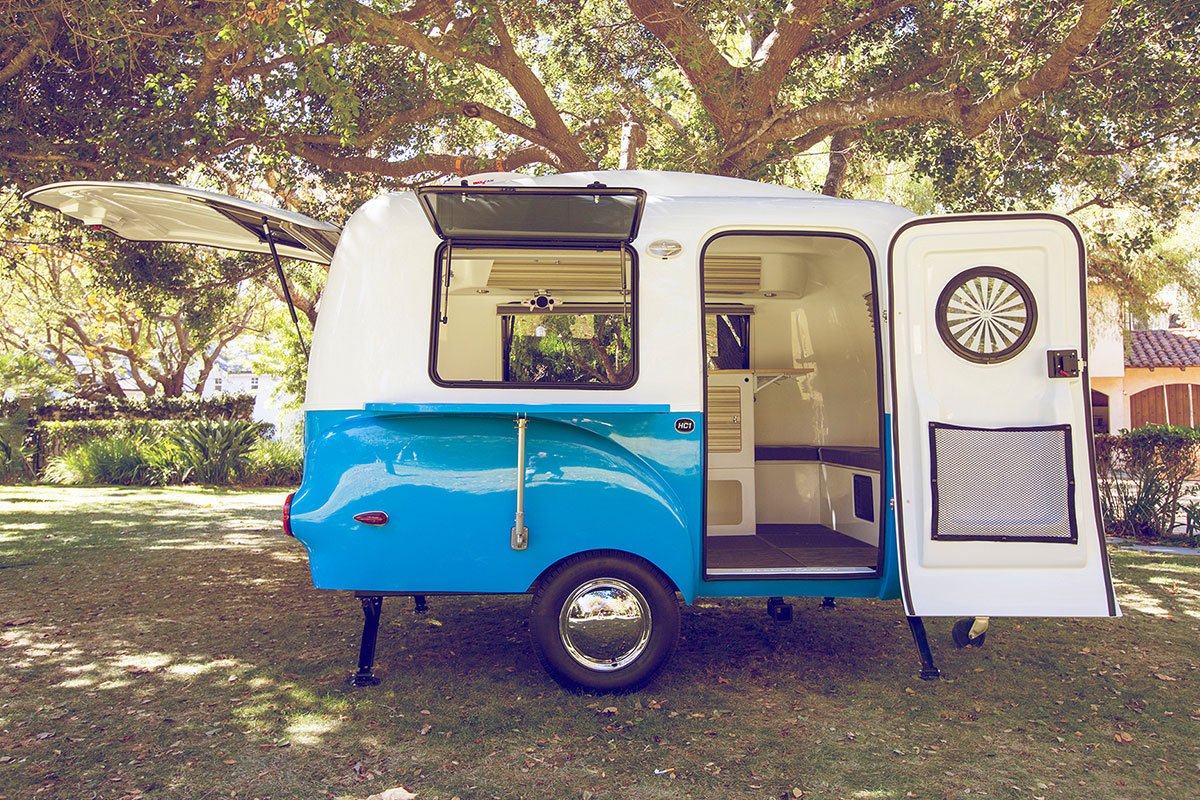As we feature more and more trailers on Expedition Portal, the excitement of coming across a previously unknown innovation, like the Adaptiv system from Happier Camper, becomes increasingly exhilarating to me. This unique trailer infrastructure lets users rearrange the foundation of their living spaces, almost as easily as if the interior of their trailer or camper consisted of regular furniture in an apartment. However, unlike standard furniture, this system promises to withstand the bouncing and jarring forces of a bumpy road without moving or shifting.
Always the optimist, when I first saw this innovative setup, my initial thought was that Happier Camper’s system could provide some great opportunities for owners who place a premium on versatility. But that optimism is not without some reservations. Some of the initial questions that I find myself asking are Is this modular system really as useful as it sounds? And, does it feel like a good value at the price point? Let’s dig into the details.
Happier Camper Trailers: HC1 and Traveler (HCT)
Happier Camper offers two different travel trailers to fit your needs; their compact flagship model, the HC1, and the larger “fully equipped” Traveler (aka the HCT). Both trailers are based on a 100-percent fiberglass double-hull shell with rigid frames, torsion axles, and a GVWR of 3,500 pounds. Both trailers offer Happier Camper’s unique modular interiors. They are also charmingly retro-modern in design, reminiscent of the beloved 1960’s two-tone Shasta travel trailers.
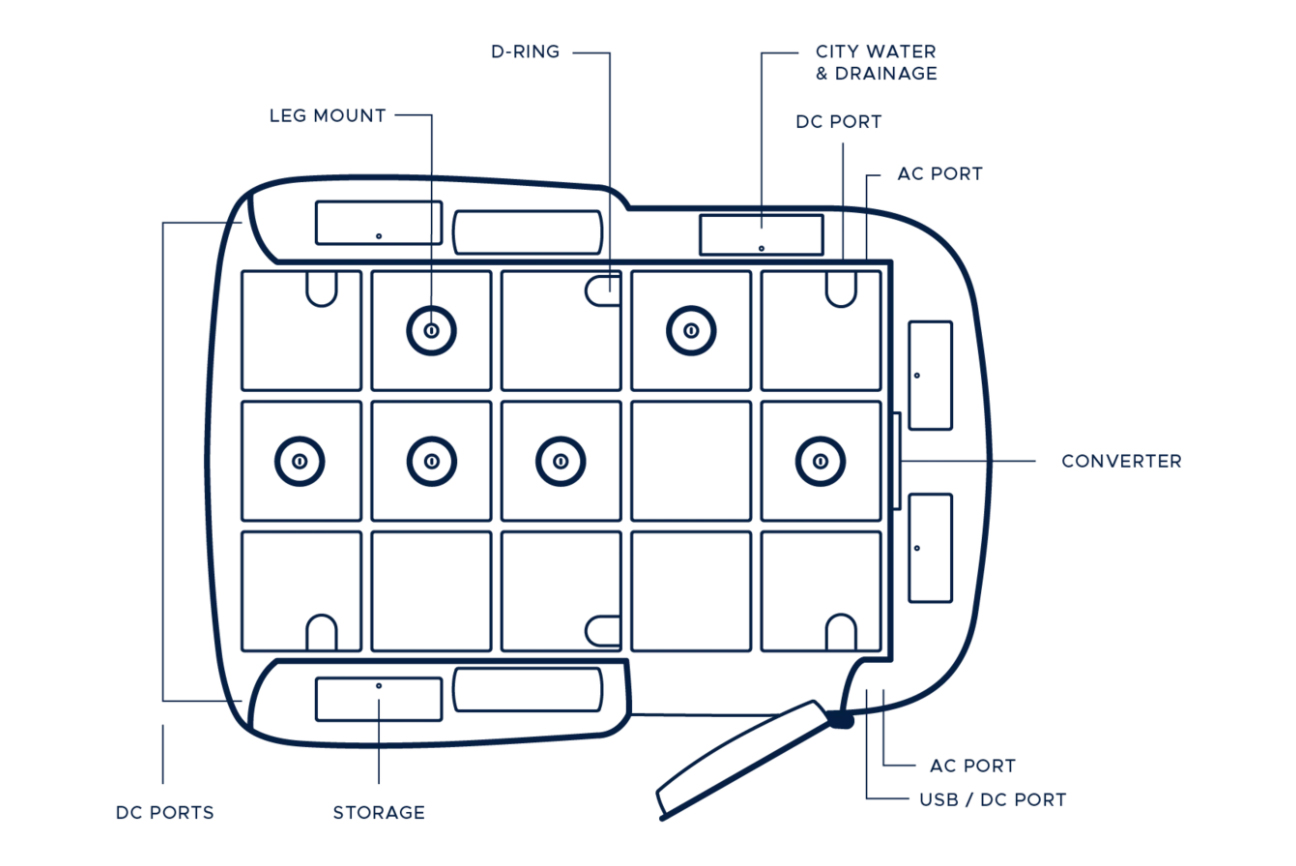
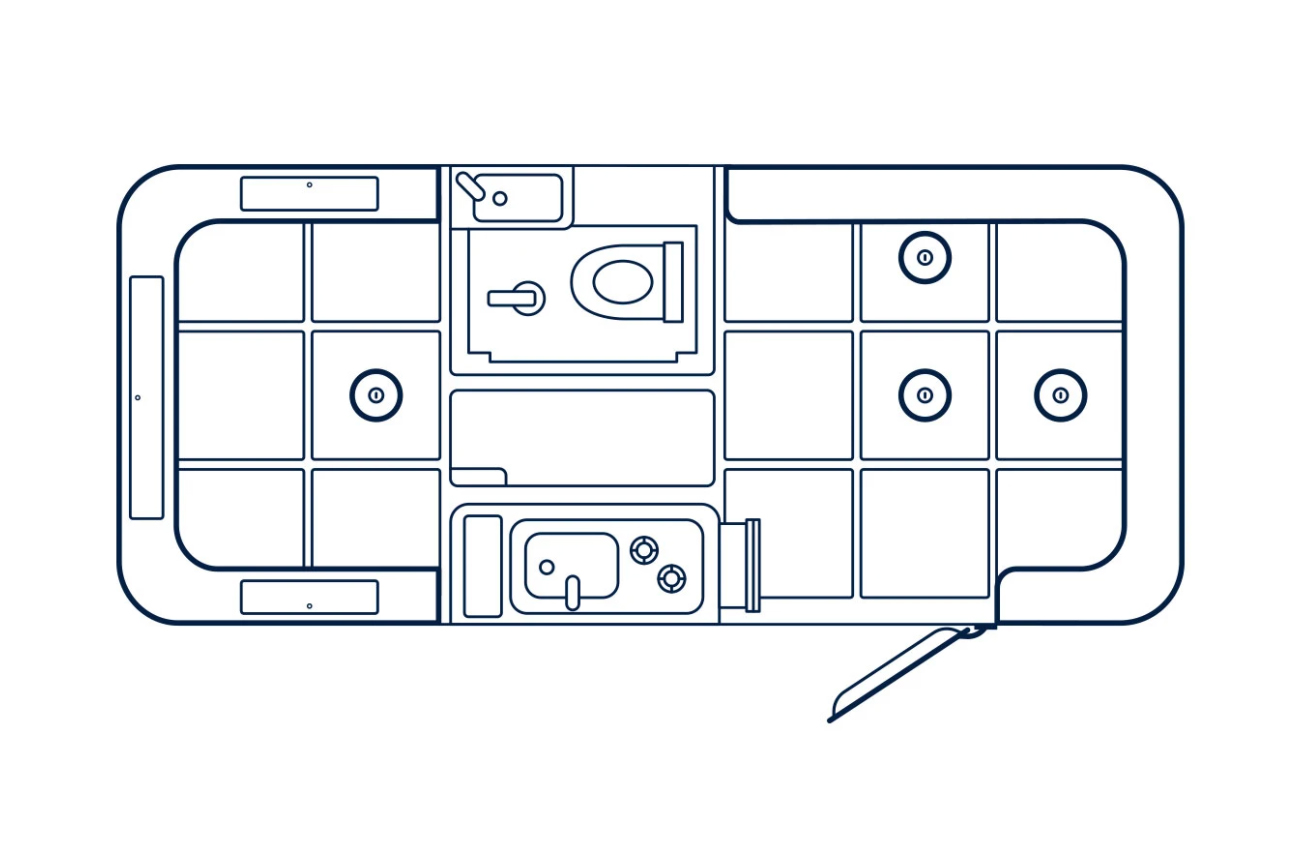
Left: The HC1. Right: The HCT.
In a nutshell, the Adaptiv rearrangeable interior system found in both trailers is comprised of a gridded honeycomb floor and a range of modular cubes with various functionalities. The idea behind this design is that the owner can easily rearrange these cubes into a diverse range of configurations at a moment’s notice. The various rotomolded cubes can also be taken out of the trailer and used as modular furniture once you arrive at your campsite, bringing your living quarters into the lovely nature all around you. I love it.
In the smaller HC1 trailer, a modular kitchenette and toilet can be rearranged, too, just like the other basic cubes. In the larger HCT, you’ll get additional square footage but at the expense of a stationary kitchen and restroom. However, the HCT still maintains the gridded floor, allowing you the ability to rearrange the living quarters of the trailer into various configurations.
What are the use-cases for a modular trailer interior?
Now that we’ve discussed the Adaptiv system in these two trailers, we can address the main question that I had: what are some real-world use-cases for a modular trailer interior? Here are some ideas:
- People who want a travel trailer that can take the family camping one weekend, then haul materials the next.
- People who want a travel trailer that can function as a comfortable sleeping space but also be reconfigured for hauling a motorcycle in a completely enclosed space.
- People who pursue a range of adventure sports that require a varied selection of equipment at destinations that are far from home.
- Business owners who want a trailer that can be used for mobile vending one week and then be reconfigured for a personal trip the next.
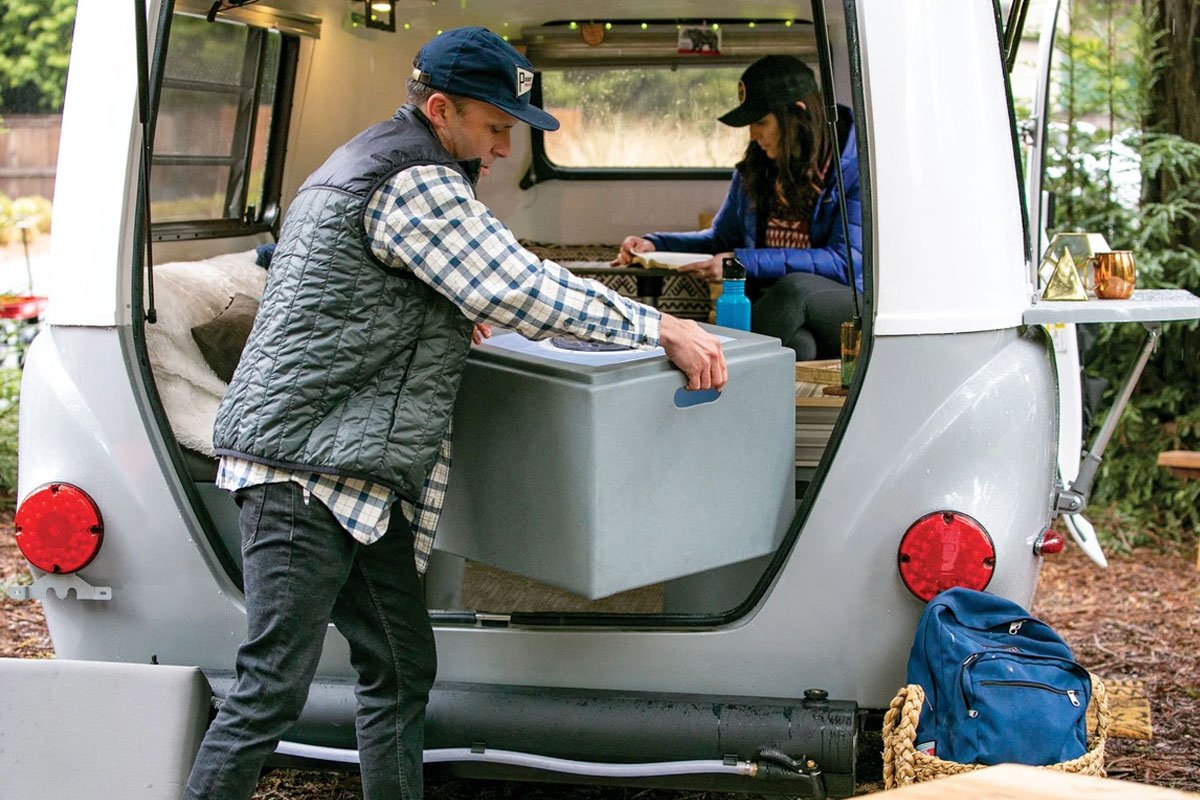
The rotomolded cubes that make up the Adaptiv modular interior of Happier Camper trailers are simple for one person to rearrange on the fly.
Basically, anyone who values versatility could be a good candidate for the HC1 or HCT trailer. But I remain a little bit skeptical, mainly because, in my mind (totally subjective opinion coming at you), users that are looking for this kind of versatility in a trailer are likely willing to trade aesthetics for value. And if you are a sucker for a good deal, you can find a fully enclosed trailer with a higher GVWR for less than half the cost of the HC1. However, this assumes some level of DIY commitment to creating a liveable space, so it’s certainly not an apples-to-apples comparison.
HC1 and HCT Features and Details
The big news with the HC1 and HCT are the modular interiors, but beyond that unique design element, neither is particularly ground-breaking (no negative connotation implied). The HC1 has a rear hatch similar to a toy hauler, which opens upward like the trunk of a typical SUV for a whole bunch of fresh air, unrestricted views, or easier loading of motorcycles and other cargo.
The HC1 has 42 square feet of living space, and the HCT doubles that with 85 square feet. Both are lightweight, with the HC1 weighing in at approximately 1,100 pounds and the HCT at 1,800 (dry weights, both with a GVWR of 3,500 pounds). For full trailer specifications, visit the Happier Camper trailer comparison page here.

The HCT or Traveler has 85 square feet of living space but unlike the HC1, the kitchen and bathroom are not modular.
The smaller HC1 starts at approximately $30,000 (for the “starter” model), with a variety of modular cubes to get you on the road. It is important to note that neither the bathroom nor kitchenette modules are standard features at this price point. Adding both of those options will bring the starting price up to approximately $33,000.
The larger model, the HCT, starts at approximately $50,000, and in this case, that includes a kitchenette. If you want a bathroom, you’ll want to choose the Comfort model, which increases the price to $55,000 but delivers a handful of additional options, like solar, forced-air heating, a water heater, and a full bathroom with ventilation.
Applying Happier Camper’s Adaptiv System to Camper Vans
One piece of this story that I find especially interesting is that Happier Camper offers its modular Adaptiv interior layout for campervans. Shipping as a seven-piece flatpack floor grid (and currently only available for Sprinters), the Adaptive kit can be easily and quickly installed, allowing users to take advantage of the full range of Adaptiv cubes. This includes pedestal tables, seating, sleeping arrangements, a kitchenette, a dry-flush toilet, and storage.
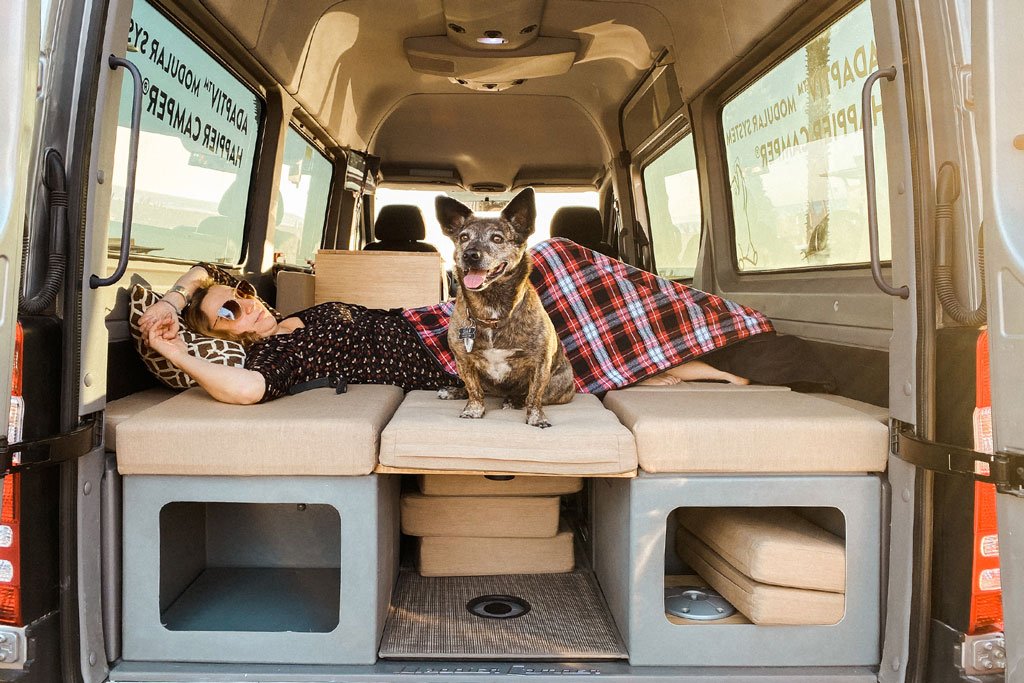
While this system may be far more simple than what most upfitters are offering with tiered or custom builds, it is without a doubt cheaper (than a brand-new vehicle+upfitting) and quicker to install. For would-be travelers who are eager to purchase a van and get out on the road with minimal effort or waiting, this could be an option worth considering.
Like the HC1 and HCT trailers, the Adaptiv interior creates a cargo van that can be stripped of interior components, making it especially useful for owners that may want to utilize their van for transporting things like motorcycles or other cargo but still retain the ability to utilize their van as a camper. In the case of the Happier Camper ecosystem, I think this is where their design shows the most promise and value.
In Conclusion
As I mentioned above, I think the most intriguing part of Happier Campers range is their Adaptiv modular flooring and interior system for campervans. To be more specific, I believe this is the best application of their innovation in regards to both practicality and value. I also tip my hat to their trailers which are pleasing to look at. However, I struggle a little bit on the price point given the full range of offerings currently on the market in the small- to medium-sized, single-axle trailer space.
But don’t let my personal position discourage you from considering Happier Camper. To my knowledge, they offer the only travel trailer with a reconfigurable interior layout currently available, and for the right person, that might be exactly what you have been looking for.
Learn more about the full range of offerings from Happier Camper on their website here.
Our No Compromise Clause: We carefully screen all contributors to make sure they are independent and impartial. We never have and never will accept advertorial, and we do not allow advertising to influence our product or destination reviews.


